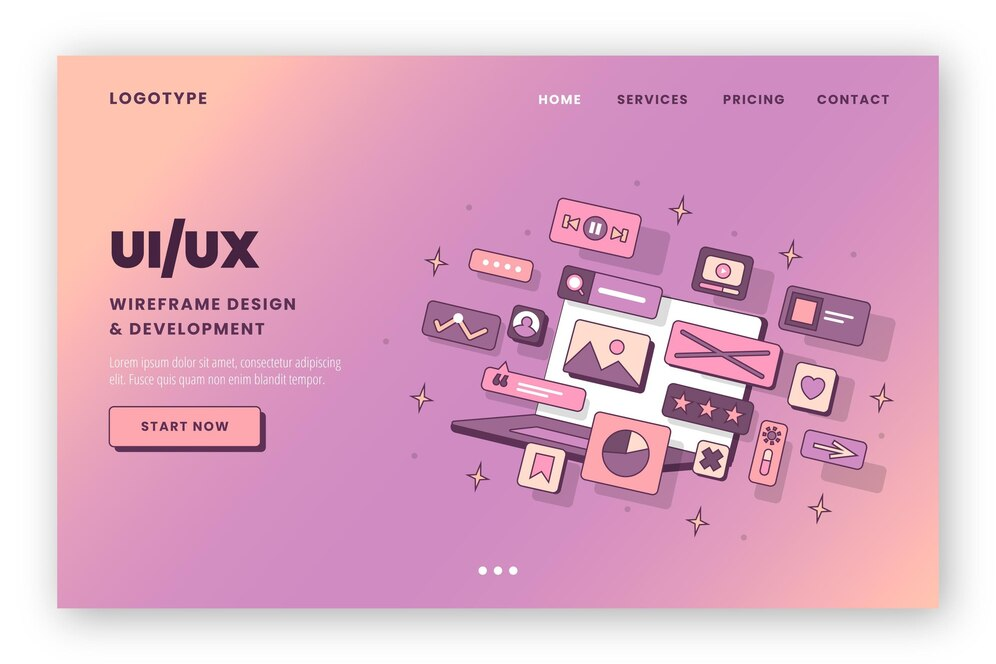Website Trends 2025: How to Keep Your Website Modern and Competitive

In 2025, websites are more than just digital business cards—they are powerful tools for customer engagement, sales, and branding. With technology evolving rapidly, keeping your website modern is crucial for staying ahead of competitors and meeting user expectations.
If your website looks outdated or lacks the latest features, visitors may leave within seconds. This guide explores the top website trends for 2025 and how you can update your site to stay relevant and competitive.

Why Updating Your Website Matters
A well-designed, up-to-date website offers several benefits:
-
Improves user experience (UX): A modern website is faster, easier to navigate, and visually appealing.
-
Boosts SEO rankings: Google prioritizes websites that are mobile-friendly, secure, and fast.
-
Builds brand credibility: A sleek, professional design increases trust among visitors.
-
Increases conversions: An optimized website encourages more leads, sales, and engagement.
Let’s explore the biggest website trends for 2025 and how you can implement them.
AI-Powered Personalization
Artificial Intelligence (AI) is transforming how websites interact with users. In 2025, AI-driven personalization will be a key feature of successful websites.
How to Implement AI on Your Website
-
Use AI chatbots to provide instant customer support.
-
Offer personalized content and product recommendations based on user behavior.
-
Implement dynamic landing pages that adapt based on the visitor’s preferences.
Example:
E-commerce websites use AI to analyze past purchases and browsing history, showing relevant product recommendations to boost sales.
Mobile-First and Adaptive Design
With more than 60% of web traffic coming from mobile devices, websites must prioritize mobile-first design.
How to Make Your Website Mobile-Friendly
-
Use responsive design to ensure a smooth experience on all screen sizes.
-
Optimize for fast loading speeds by compressing images and reducing unnecessary code.
-
Implement touch-friendly navigation with large buttons and simple menus.
Example:
Google ranks mobile-friendly websites higher in search results, making mobile optimization essential for SEO.
Voice Search Optimization
With the rise of Alexa, Google Assistant, and Siri, more users are using voice search to find information online.
How to Optimize for Voice Search
-
Use natural language keywords (e.g., "best coffee shop near me" instead of "coffee shop NYC").
-
Create FAQ pages with concise answers that voice assistants can read.
-
Focus on local SEO to capture location-based searches.
Example:
Restaurants and retail stores optimize for voice search by including conversational keywords and updating their Google Business Profile.
Dark Mode and Customizable Themes
Dark mode is now a standard feature in apps and operating systems, and websites are following the trend.
How to Add Dark Mode to Your Website
-
Provide a dark mode toggle so users can switch between themes.
-
Use CSS media queries to detect user preferences automatically.
-
Ensure high contrast and readability for text and visuals.
Example:
Social media platforms like Facebook and Twitter allow users to enable dark mode for a more comfortable viewing experience.
Interactive and Engaging Content
Users expect websites to be interactive and engaging rather than just static pages.
How to Add Interactive Elements
-
Use scroll-triggered animations to make content more dynamic.
-
Implement micro-interactions (e.g., button animations, hover effects).
-
Add interactive quizzes, polls, or surveys to increase engagement.
Example:
Real estate websites use 360-degree virtual tours to let users explore properties online before scheduling a visit.
Ultra-Fast Loading Speed
Website speed is critical for SEO and user experience. If your site takes more than 3 seconds to load, visitors are likely to leave.
How to Improve Website Speed
-
Use lazy loading to defer the loading of non-essential images and videos.
-
Optimize images using next-gen formats like WebP.
-
Enable browser caching and use CDNs (Content Delivery Networks).
Example:
Google PageSpeed Insights helps websites identify and fix speed-related issues to improve performance.
Sustainable and Eco-Friendly Web Design
As internet usage grows, sustainable web design is becoming more important to reduce digital carbon footprints.
How to Make Your Website More Sustainable
-
Optimize website code to reduce unnecessary data transfer.
-
Use green web hosting providers powered by renewable energy.
-
Minimize video autoplay and heavy scripts that consume bandwidth.
Example:
Companies like Google and Apple are adopting eco-friendly practices, including reducing energy consumption in their digital services.
Advanced Cybersecurity Measures
With cyber threats increasing, website security is more important than ever in 2025.
How to Secure Your Website
-
Install SSL certificates to encrypt data and enable HTTPS.
-
Use multi-factor authentication (MFA) for logins.
-
Regularly update software and plugins to patch security vulnerabilities.
Example:
Data breaches can cost businesses millions—investing in strong security measures prevents financial and reputational damage.
Conclusion
Keeping your website modern in 2025 means embracing AI-driven personalization, mobile-first design, interactive content, and fast-loading speeds while ensuring strong security and sustainability.
If your website feels outdated, now is the time to update and optimize. A well-designed, up-to-date website not only enhances user experience but also improves SEO rankings, credibility, and conversions.


Subscribe to follow product news, latest in technology, solutions, and updates
Other articles for you



Let’s build digital products that are simply awesome !
We will get back to you within 24 hours!Go to contact us Please tell us your ideas.
Please tell us your ideas.







